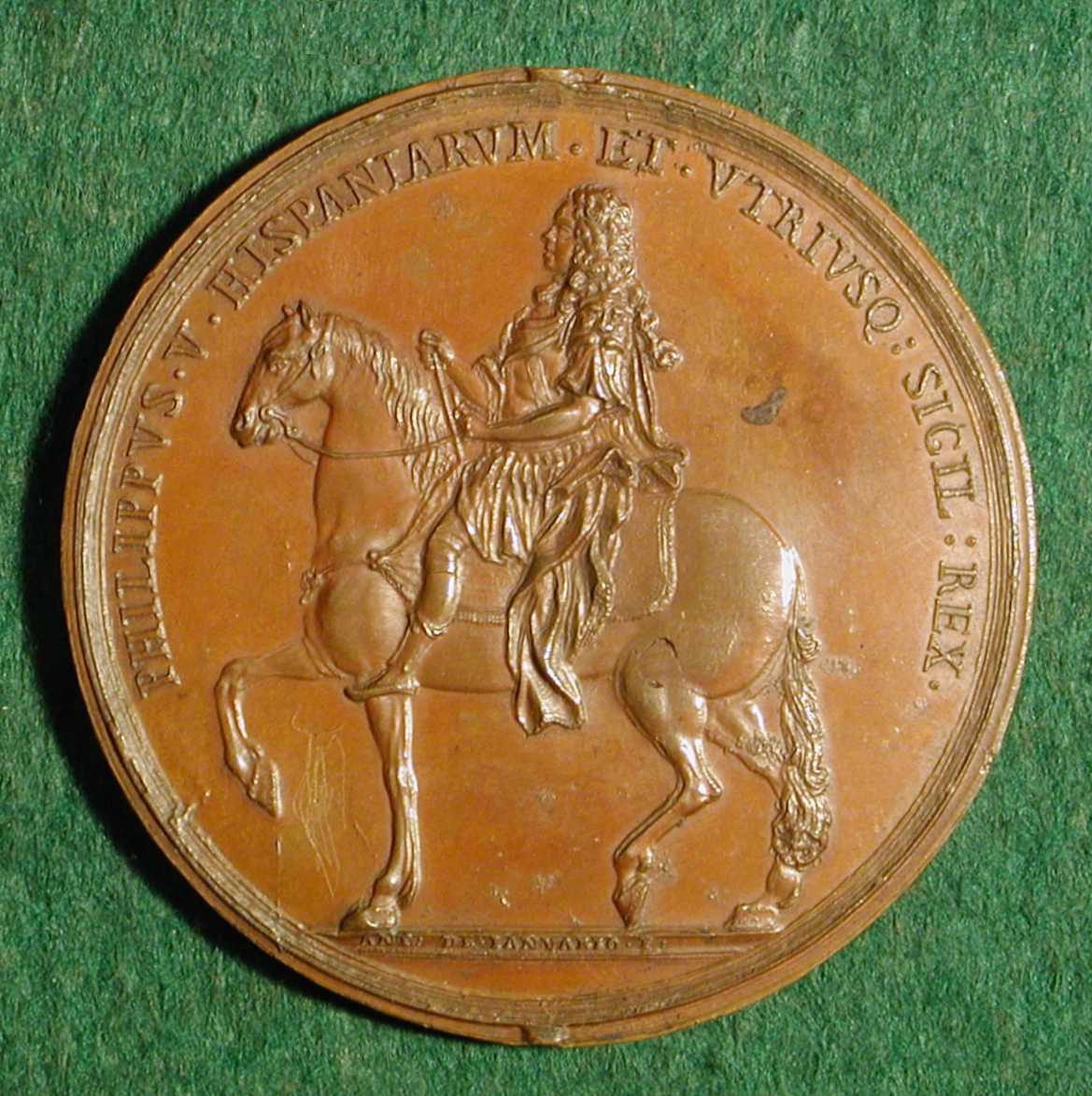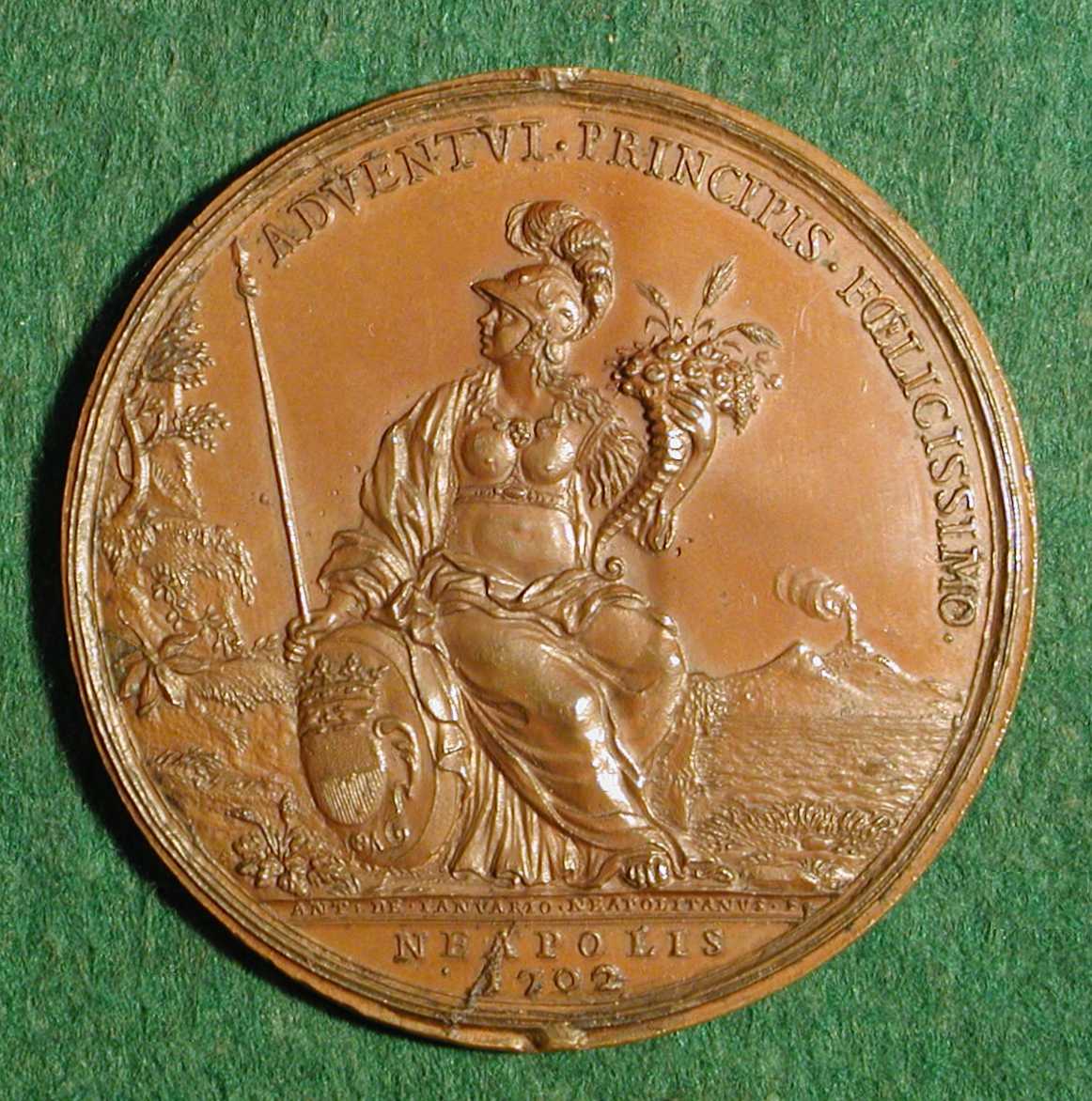

Historical and
Commemorative Medals
Collection of Benjamin Weiss
|
PHILIP V, KING OF SPAIN GENNARO, Maria Antonio de: Spain, 1702, Bronze, 60 mm King Philip V of Spain (1683–1746) or Philippe of Anjou was King of Spain from 1700 to 1746, the first of the Bourbon dynasty in Spain. He was the son of Louis, the Grand Dauphin and Maria Anna of Bavaria, a younger brother of Louis, Duke of Burgundy, and an uncle of Louis XV of France. His paternal grandparents were Louis XIV of France and Maria Theresa of Spain. His maternal grandparents were Ferdinand Maria, Elector of Bavaria and Adelaide Henriette of Savoy, daughter of Victor Amadeus I, Duke of Savoy. Because Philip was the grandson and possible successor of Louis XIV of France, his accession to the Spanish throne provoked the War of the Spanish Succession. By the Treaty of Utrecht (1713), Philip kept the Spanish throne by excluding himself from the succession in France. Philip involved Spain in a series of European conflicts, including the War of the Austrian Succession and the War of Jenkins’ Ear, which increased Bourbon power without substantial Spanish gains. These and other conflicts led to the gradual decline of Spanish power and to the advent of the British as the supreme commanders of the sea and world trade. Philip was afflicted by fits of manic depression and melancholia. He was comforted by the castrato singer Carlo Broschi Farinelli, who sang operatic arias each night to the king. Philip was succeeded by his son Ferdinand VI and later by Charles III of Spain, a son of Philip’s second wife, Elizabeth Farnese. This is one of artist’s earliest medals. It is one of 390 in bronze, 70 in silver, and 2 in gold struck for the visit of Philip V to Naples in 1702. For the occasion, an equestrian statue (obverse of medal) was commissioned for the Largo del Gesu Nuovo. The statue was the masterpiece of the sculptor Lorenzo Vaccaro. Completed in 1705, it was destroyed by a mob when the Austrians occupied Naples in 1707. LINK to Biography of Philip V (from wikipedia) |
|